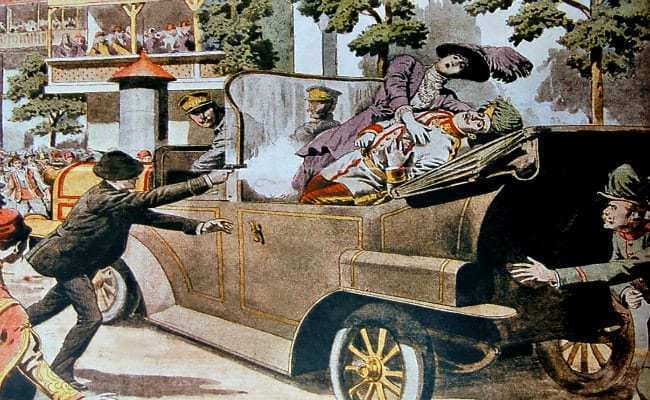On June 28, 1914, the heir to the throne of the Austro-Hungarian Empire, Archduke Ferdinand, and his wife were shot dead by a member of the Black Hand Gang during his visit to Sarajevo, the capital of Bosnia. The event which is widely acknowledged to have triggered the outbreak of World War I was blamed on Serbia, who by then wanted to rid Bosnia of Austrian rule.
One month later, the ambassador of the Austro-Hungarian Empire to Serbia delivered an ultimatum to the Serbian foreign ministry – it was a hard-line policy that Austria-Hungary was determined to pursue toward Serbia. While there were only two countries directly involved in the aftermath of Franz Ferdinand’s assassination, Germany (allied with Austria-Hungary) was determined to contain the effects of the ultimatum diplomatically.
However, the other heavily armed European nations did not see Austria-Hungary as acting alone, and with reason, started the inevitable war of continental supremacy, resulting in the deaths of approximately 10 million people, most of them civilians. While the war could have been stopped, a lack of international diplomatic routines meant there was no chance in the case of an abrupt war, and that is exactly what happened.
So, after thinking through what conspiracy theorists say about the murder of Archduke Ferdinand and how it led to the outbreak of World War I, I present to you ten facts you might not have known about the incident that possibly led to the outbreak of World War I.
10. The first monument to the assassins was erected in 1930

The first monument to Gavrilo Princip was unveiled on February 2, 1930. It was a black marble plaque with Cyrillic gold lettering on the wall high above the spot where Princip stood. While the plaque was attacked and vilified and criticized to represent a monstrous provocation, the Yugoslav government made a point of the fact that it was a private memorial to Gavrilo Princip. It read: “Princip proclaimed freedom on St. Vitus’ Day June 28, 1914.” On April 15, 1914, the German troops who entered Sarajevo marched to the site and removed the plaque. It was later presented to Adolf Hitler for his fifty-second birthday on April 20, 1941.

